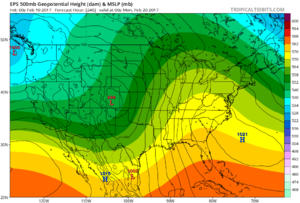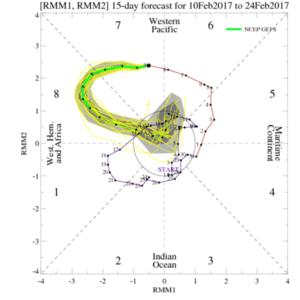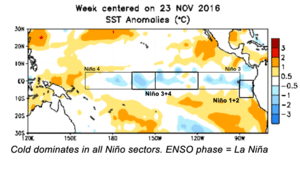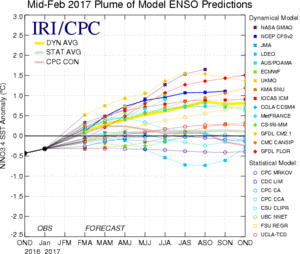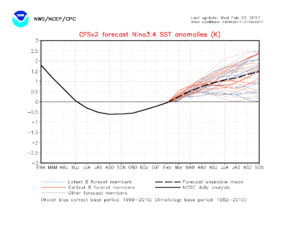Brett Roberts
EF5
A couple years ago I developed a crude scoring methodology for previous chase seasons going back to 1955 using Storm Data (tornado and hail reports, specifically). I then ran simple linear regressions on the chase season scores against various climate/teleconnection indices. Looking at a 3-4 month lead time, the Arctic Oscillation (AO) had the largest correlation with the subsequent chase season's score. It's a positive correlation, so +AO values during the winter are associated with "better" chase seasons.
So far this winter, the AO has been dominantly positive. In fact, we're just now entering our first sustained negative period since mid autumn! If the GEFS forecasts for the next 2 weeks are reasonably accurate, we should end meteorological winter with a mean AO somewhere around +1.0. All else being equal, this is a good sign for the upcoming season, and particularly the early season.
Of course, there are tons of caveats, including the relatively small sample size. The correlation is not all that strong, anyway (R ~ 0.25 to 0.3, depending on the region of interest). But it's somewhat comforting to know that over the last 60 years, most of the completely dreadful Plains chase seasons occurred following dominantly -AO winters.
With all that said, drought is certainly becoming a concern, especially for the High Plains. The past two years, drought looked like it would be a problem during the winter and early spring, but slow-moving closed lows in April saved the day just in time. So you never know. Unfortunately, the ENSO signal -- weak negative ONI likely transitioning toward weak to moderate positive values during the spring -- is not particularly encouraging, either. Some recent seasons with a similar progression include 2006, 2009, and 2012...
So far this winter, the AO has been dominantly positive. In fact, we're just now entering our first sustained negative period since mid autumn! If the GEFS forecasts for the next 2 weeks are reasonably accurate, we should end meteorological winter with a mean AO somewhere around +1.0. All else being equal, this is a good sign for the upcoming season, and particularly the early season.
Of course, there are tons of caveats, including the relatively small sample size. The correlation is not all that strong, anyway (R ~ 0.25 to 0.3, depending on the region of interest). But it's somewhat comforting to know that over the last 60 years, most of the completely dreadful Plains chase seasons occurred following dominantly -AO winters.
With all that said, drought is certainly becoming a concern, especially for the High Plains. The past two years, drought looked like it would be a problem during the winter and early spring, but slow-moving closed lows in April saved the day just in time. So you never know. Unfortunately, the ENSO signal -- weak negative ONI likely transitioning toward weak to moderate positive values during the spring -- is not particularly encouraging, either. Some recent seasons with a similar progression include 2006, 2009, and 2012...

